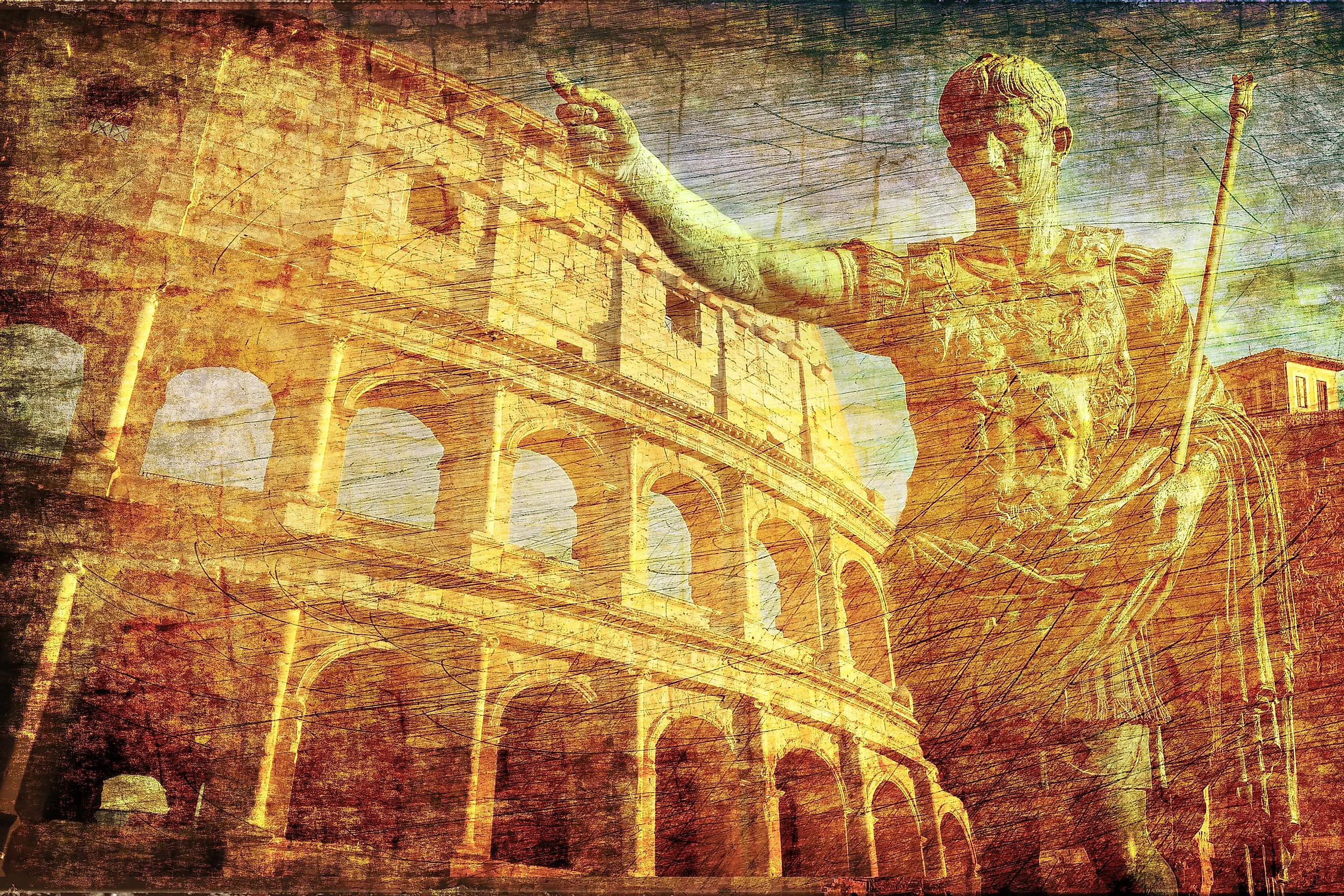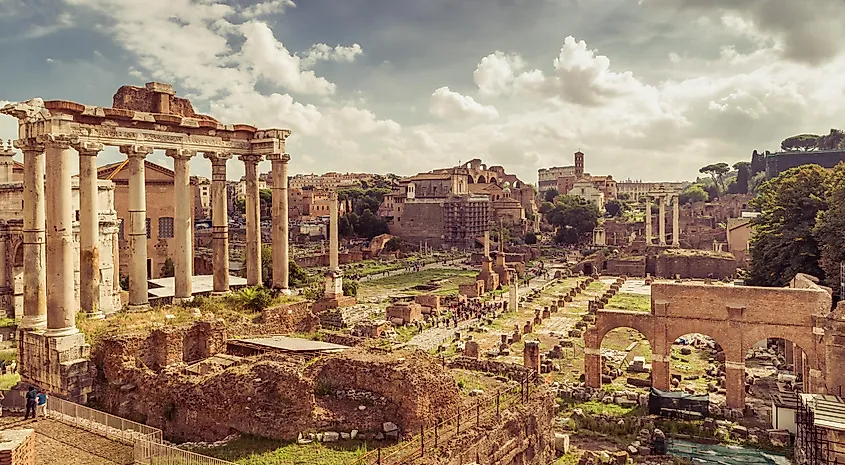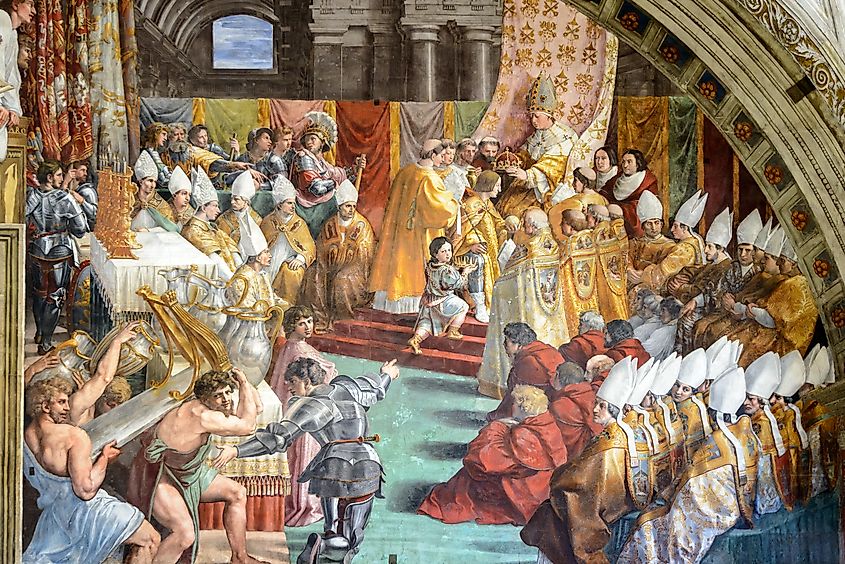
Succession Of The Roman Empire
One of the most powerful empires to both grace and pillage the Earth, the Roman Empire was a militant civilization that lasted 500 years and conquered regions from Scotland to the Persian Gulf. A Republic governed the state from 509 BCE until 27 BCE when an Imperial Age began under Augustus. The level of sophistication found in the Roman Empire was unprecedented; during the dark ages, the shadows of aqueducts and colosseums loomed over passersby who could only wonder what exotic civilization had once occupied the world. Following the collapse of this academic and artistic center, subsequent societies based their legitimacy entirely on their connection to this ancient empire. As is the nature of man, these societies constantly evolved during times of war and changes in religious hegemony. The timeline of how the prestige of Rome was carried on in the ages that passed after its dismemberment is a confusing subject, but it is a worthwhile investigation, nonetheless.
The Fall of Rome

Rome fell with a slow and drawn-out whimper rather than a climactic engagement of sword and steel. The empire peaked in 117 CE under the leadership of Trajan and prior emperors, with a 2.3 million square mile territory at the center of the world. Scholars from this time frequently called the area within the borders of the Empire ‘the known world,’ albeit societies in Asia and South America were flourishing with or without Roman recognition. In 286 CE, the emperor Diocletian chose to divide the nation into separate empires, East and West, to help address stability. Civil wars had rocked the region in years prior, so separate administrations could preemptively address that; Rome remained the capital of the Western Empire, and Byzantium (later called Constantinople) became the capital of the Eastern Empire.
The Western Roman Empire fell in 476 CE after Visigoths sacked Rome, splintering the already weakened state. The Eastern Roman Empire was wealthier and more powerful and lasted almost a thousand years longer. Emperor Constantine renamed the capital from Byzantium to Constantinople after himself. After the Ottomans occupied the city in 1453 CE, they simultaneously dissolved the Empire, and the city was again renamed Istanbul. Because the Germanic warriors split the Western Empire into separate territories, the fall of the Eastern Roman Empire was a concrete end to the name of Rome. However, the stability it had offered was sorely missed, and many nations had already dubbed Constantinople the ‘second Rome.’ Therefore, whoever could establish a ‘third Rome’ would rightfully inherit its prestige, institutions, and renown.
The Eastern Roman Empire Succession

After the fall of Constantinople, the Eastern Orthodox Church was forced to disperse. The discussion of succession is also a religious, Christianity-focused topic due to Constantine’s embrace of the religion. In 312 CE, Constantine I merged the Roman pagan institutions with Christian theology in an effort to consolidate power and isolate his political opponents. However, it is worth mentioning that his mother, Helena, was a Greek Christian. After the Roman Catholic Church split with the Eastern Orthodox church in 1054 CE, the implication was that 'Rome exists where the Eastern Orthodox church exists.'
Moscow took the opportunity to label itself as the ‘Third Rome’ following the marriage between Tsar Ivan III and Sophia Palaiologina, niece of Constantine XI Palaiologos, the final emperor of Byzantium. This allowed the Romanov family to unite Russia under this concept. This union later proved useful to Tsar Alexander II in the 19th century during his efforts to unite the Russian Empire through claims of legitimacy. Another significant contender for the title of ‘Third Rome’ was the Ottoman Empire itself when Mehmed II claimed succession to the Roman throne. By force, the subsequent sultans declared they had inherited the legacy of Rome itself. Eastern Orthodox monks did not heed those claims, although their preference for Moscow as the third Rome also defied typical rules of succession: inheritance through family ties was less Roman and more typically a Medieval custom for transferring power.
The Western Roman Empire Succession

After the Visigoths scattered to regions of the Western Roman Empire, the city of Rome remained inhabited, although it no longer held the influence and power it once had. The Roman Catholic Church took up residence, and the papal states gained significant amounts of influence over Medieval Europe; just as the Eastern Orthodox Church represented the Eastern Roman Empire, so did the Roman Catholic Church with the Western Roman Empire. Therefore, the church helped establish the Holy Roman Empire in 800 CE by crowning Charlemagne, a figure who conquered a vast amount of Europe.
The use of Charlemagne and his family tree gave the Roman Church the political arm it needed to wield power around greater Europe; this set a precedence of all European monarchs tying themselves back to Rome to gain legitimacy. A notable exception was found in Napoleon Bonaparte, who, through sheer willpower and success, gained the Pope’s support for the title of Emperor in the early 19th century. Italian dictator Benito Mussolini even attempted to promote the idea of a revival of the Roman Empire during his failed attempt to dominate the Mediterranean during World War II.
Conclusion

Historians like Louis Eisenmann have suggested that the combined forces seen in NATO and the League of Nations represent an imperial revival of the Roman Empire. Certainly, many capitals of the Western World emulate Roman architecture and abide by the governing structure of the ancient Roman Republic. However, while these propositions are intriguing, they fail to capture the reality that concepts like ‘Rome’ existed as a product of their time and culture; linguists today do not even know how the original Latin language (Rome’s mother tongue) was spoken because of the time that has passed, and it is now considered a dead language. Although the Roman Empire may be permanently in the past, the memories of its legends will continue into eternity.











